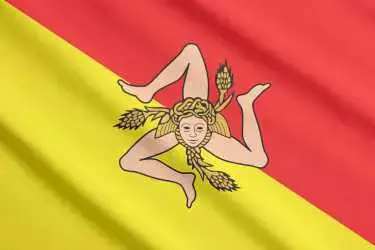

The best time to visit Sicily depends on what kind of experience you’re seeking. For warm weather, beach days, and outdoor exploration, the ideal time is from May to October. July and August are the hottest months, often exceeding 30°C (86°F), and the beaches are bustling with both tourists and locals. If you prefer a more relaxed pace, visit in May, June, or September, when the weather is still warm, but the crowds are smaller. Spring and autumn also offer perfect conditions for hiking and exploring the island’s many historical sites. Winter (November to February) is cooler but mild, and though some businesses may close, it’s an ideal time to enjoy Sicily’s cities, cultural festivals, and the island’s natural beauty without the tourist rush. Additionally, winter offers a chance to visit Mount Etna for skiing or snowshoeing.
What is the Island known for?
Sicily is known for its rich history, stunning landscapes, and cultural blend of Greek, Roman, Arab, and Norman influences. The island is famous for landmarks like Mount Etna, ancient ruins, beautiful beaches, and its delicious cuisine.
Is the Island a good destination for families?
Yes, Sicily is an excellent destination for families. It offers a variety of family-friendly activities, including historical site visits, beach outings, and cultural experiences in its vibrant cities and small towns.
Is the Island a safe destination for tourists?
Sicily is generally a safe destination for tourists. As with any travel destination, it's important to be cautious in busy tourist areas and avoid displaying valuables. Most visitors find the island friendly and welcoming.
Do you need a visa to visit the Island?
If you are from an EU or Schengen Area country, you do not need a visa to visit Sicily. For non-EU travelers, check Italy's visa requirements as Sicily is part of Italy.
What is the best way to get to the Island?
The best way to get to Sicily is by flying into one of its main airports, such as Palermo or Catania. You can also take ferries from mainland Italy or other Mediterranean destinations.
Should I rent a car on the Island?
Renting a car in Sicily is recommended if you want to explore beyond the main cities. It allows you to easily visit rural areas, historical sites, and coastal towns that are not always accessible by public transport.
Is the Island wheelchair accessible?
Sicily’s accessibility varies. While some modern areas and hotels are wheelchair-friendly, many historic sites, narrow streets, and older towns can pose challenges. It's advisable to research accessibility options ahead of time.
What are the Island’s most famous landmarks?
Sicily’s most famous landmarks include Mount Etna, the Valley of the Temples in Agrigento, the ancient Greek theater in Taormina, Palermo’s Norman Palace, and the baroque cities of the Val di Noto.
What are the best beaches on the Island?
Some of the best beaches in Sicily include San Vito Lo Capo in the northwest, Mondello Beach near Palermo, Cefalù Beach, and the stunning Scala dei Turchi, famous for its white limestone cliffs.
What is unique about the Island’s wildlife?
Sicily’s unique wildlife includes various species of birds, such as flamingos and eagles, and Mediterranean marine life. The island is home to natural reserves like Zingaro and the volcanic landscapes of the Aeolian Islands.
What traditional foods should you try on the Island?
Sicilian cuisine is renowned for dishes like arancini (fried rice balls), caponata (eggplant stew), pasta alla Norma, and cannoli (pastry filled with sweet ricotta). Sicily’s street food, like panelle (chickpea fritters), is also a must-try.
Can you drink tap water on the Island?
Yes, tap water is generally safe to drink in Sicily, but many locals and tourists prefer bottled water, especially in more rural areas.
What is the nightlife like on the Island?
Sicily offers a vibrant nightlife scene, especially in cities like Palermo, Catania, and Taormina, where you can find a mix of bars, nightclubs, and live music venues. In coastal towns, beach bars are popular during the summer.
How can I stay connected to the internet on the Island?
You can stay connected via mobile networks, with 4G coverage available throughout most of Sicily. SIM cards and eSIM options are available for tourists, and Wi-Fi is widely available in hotels, restaurants, and cafes.
What are some local souvenirs to bring home from Sicily?
Popular souvenirs from Sicily include local olive oil, wines, limoncello (lemon liqueur), ceramics from Caltagirone, pupi (traditional Sicilian marionettes), and sweets like marzipan fruit and cannoli. You can also bring back local jewelry or coral crafts.
